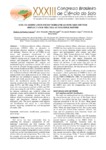Please use this identifier to cite or link to this item:
http://www.alice.cnptia.embrapa.br/alice/handle/doc/939003| Title: | Soil classification from visible/near-infrared diffuse reflectance spectra at multiple depths. |
| Authors: | VASQUES, G. de M.  DEMATTE, J. A. M.   LOPEZ, L. R.   TERRA, F. da S.   |
| Affiliation: | GUSTAVO DE MATTOS VASQUES, CNPS; José Alexandre Melo Dematte, Universidade de São Paulo; Leonardo Ramirez Lopez, Geographisches Institut, Universität Tübingen, Rümelinstraße; Fabrício da Silva Terra, Universidade de São Paulo. |
| Date Issued: | 2011 |
| Citation: | In: CONGRESSO BRASILEIRO DE CIÊNCIA DO SOLO, 33., 2011, Uberlândia. Solos nos biomas brasileiros: sustentabilidade e mudanças climáticas: anais. Uberlândia: SBCS: UFU: ICIAG, 2011. 1 CD-ROM. |
| Pages: | 4 p. |
| Description: | Abstract : Visible/near-infrared diffuse reflectance spectroscopy (VNIRS) offers an alternative to conventional analytical methods to estimate various soil attributes. However, the use of VNIRS in soil survey and taxonomic classification is still underexplored. We investigated the potential use of VNIRS to classify soils in a region with variable soils, geology, and topography in southeastern Brazil. We combined principal component (PC) analysis, and multinomial logistic regression to classify 291 soils at the levels of suborder (second highest), and suborder with textural classification (STC), described in the field according to the Brazilian Soil Classification System. Soil visible/near-infrared (400-2500 nm) spectra were collected from three depth intervals (0-20, 40-60, and 80-100 cm), and combined in sequence to compose a pseudo multi-depth spectral curve, which was used to derive the classification models. The percent of correctly classified soils at the suborder level was 79% using 20 PCs, and 96% using 30 PCs. At the STC level, soils were correctly classified in 100%, and 78% of the cases using 20, and 30 PCs, respectively. Given the inherent complexity and variability within soil taxonomic groups, and in contrast the similarity among different groups, combining spectral data from different depths in multivariate classification offered a simple and inexpensive solution to adequately distinguish soils. This novel approach could improve soil classification and survey in a cost-efficient manner, supporting sustainable use, and management of tropical soils. |
| NAL Thesaurus: | spectroscopy |
| Keywords: | Multivariate classification Pedometrics |
| Type of Material: | Artigo em anais e proceedings |
| Access: | openAccess |
| Appears in Collections: | Artigo em anais de congresso (CNPS)  |
Files in This Item:
| File | Description | Size | Format | |
|---|---|---|---|---|
| soilclassificationfronvisiblenearinfrared....PDF | 402,83 kB | Adobe PDF |  View/Open |









